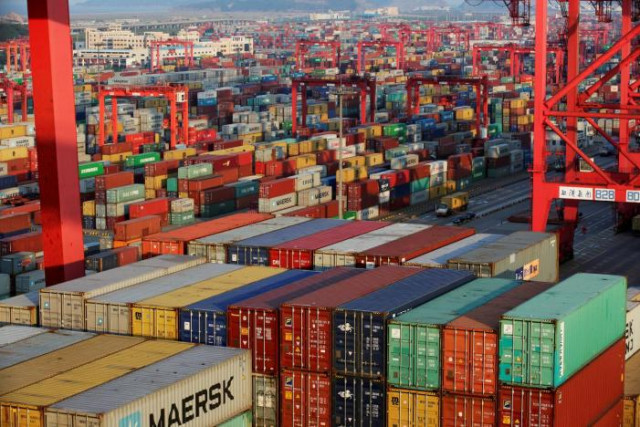Deficit doubles despite higher exports
Trade gap widens to $11.7b in Jul-Sept 2021 due to surge in imports

Pakistan’s trade deficit widened 100% to $11.7 billion in the first quarter of current fiscal year due to an exceptional surge in imports that outpaced the increase in exports amid Finance Minister Shaukat Tarin’s frustration over inaccuracy of prediction about numbers.
The external trade figures released by the Pakistan Bureau of Statistics (PBS) on Monday showed that the trade deficit far exceeded expectations. Pakistan’s trade deficit - the gap between imports and exports - increased to $11.7 billion during July-September of fiscal year 2021-22, the national data collecting agency stated.
The deficit was $5.9 billion or over 100% more than the comparative period of previous fiscal year. The widening trade deficit suggests that by June next year, it will be far higher than the target of $28.4 billion set by the government. The threemonth deficit was already equal to 41% of the target. During July-September FY22, exports increased 27.3% and stood close to $7 billion as compared to $5.4 billion in the same period of last year, according to the national data collecting agency.
In absolute terms, there was an increase of $1.5 billion in exports during the first three months of current fiscal year. During the three-month period, the exports were equal to 27% of the annual target of $26.3 billion. However, the Ministry of Commerce projects that exports will hit $31 billion in full fiscal year 2021-22. Imports during JulySeptember FY22 increased 65% to $18.6 billion. In absolute terms, the imports grew $7.3 billion, according to the PBS.
READ Economic recovery and exchange rate
Last month, the central bank introduced a cash margin requirement for more imported goods besides curtailing consumer financing to ease import pressure. The federal government has not yet implemented any new administrative measures to supplement the central bank efforts. Sources revealed that last week, the finance minister called a meeting to review the external sector numbers. He was clearly upset with the situation and abruptly ended the meeting within five minutes, they added.
The meeting was also attended by Adviser to Prime Minister on Commerce Abdul Razak Dawood along with his team. Sources said that when government officials started giving presentations, the commerce adviser inquired about other stakeholders, who were not present in the meeting. The meeting was told that their presence was not required, which irked the finance minister, who stated that the matter would now be discussed with the prime minister, who had desired to see monthly updates.
Last Friday, The Express Tribune sent questions to the Ministry of Finance about discussions in the meeting but the finance ministry chose not to respond to those questions. The higher import bill has increased the external gross financing requirement that Pakistan and the International Monetary Fund (IMF) have estimated at $20 billion and around $25 billion respectively. Growing imports will either increase the external borrowing requirement or dent the official foreign exchange reserves as exports fail to match the pace of imports.
Remittances from overseas Pakistanis - another important source of debt-free financing - are likely to show a single-digit growth as per central bank projections. Foreign direct investment has already plunged 20% in the first two months of FY22, exacerbating the government’s vulnerabilities. As against earlier projection of $55 billion, the imports are now estimated at around $72 billion, according to the sources. The matter of external sector vulnerabilities will also be discussed during the IMF talks that began on Monday.
September data
The country’s exports of goods remained shy of $2.4 billion mark in September 2021 compared to a year ago, according to the PBS. They were higher by 26% or $493 million over the same month of last year. Imports remained at around the highest level of $6.5 billion, which were higher by 51% or $2.2 billion, according to the PBS. As a result, the yearly trade deficit widened 70% to $4.1 billion in September 2021.
Month-on-month comparison
On a month-on-month basis, the exports increased nearly 6% to $2.4 billion, according to the PBS. There was a rise of $133 million in export receipts in September as compared to the preceding month. Imports marginally contracted by 1.5% and stood at $6.5 billion last month. In absolute terms, there was a reduction of $98 million in the import bill. As a result, the trade deficit shrank 5.3% or $233 million in September over August.



















COMMENTS
Comments are moderated and generally will be posted if they are on-topic and not abusive.
For more information, please see our Comments FAQ